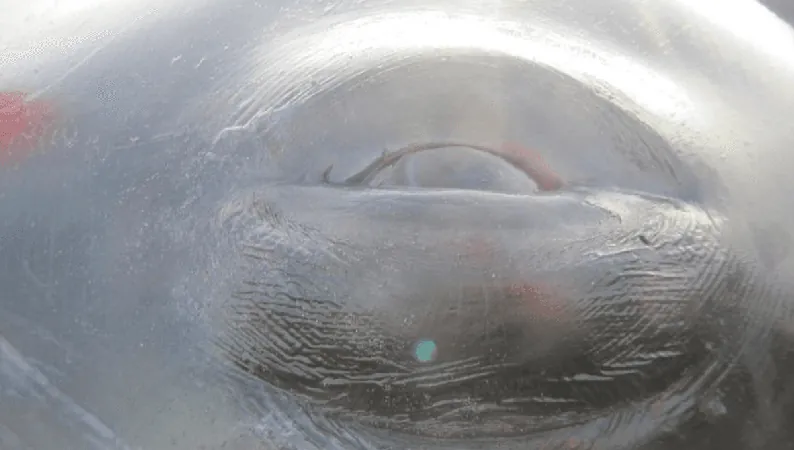
Unearthed Mystery: A 100-Year-Old Harpoon Found in the World’s Longest-Living Mammal
2024-11-28
Author: Kai
Unearthed Mystery: A 100-Year-Old Harpoon Found in the World’s Longest-Living Mammal
In an astonishing discovery back in 2007, Inuit whalers in Alaska stumbled upon something extraordinary while engaged in their traditional subsistence hunt. Inside the carcass of a bowhead whale, they uncovered fragments of an ancient weapon – a harpoon that was not only a relic but also a glimpse into the history of whaling practices. After thorough investigation, scientists traced the weapon back to the 1900s, with the whale itself estimated to be around 115 years old, making it one of the oldest living creatures known to mankind.
Bowhead whales (Balaena mysticetus) have faced dire challenges over the years, particularly due to the rampant commercial whaling that reduced their population to fewer than 3,000 by the early 20th century. Thankfully, commercial whaling effectively ceased in 1921, allowing the bowhead population to gradually recover to a robust count of between 10,000 and 23,000 individuals today.
During the subsistence hunt that led to this remarkable find, an astute biologist noticed the harpoon fragments while the whale was being processed. This led to a collaboration with John Bockstoce, a historian at the New Bedford Whaling Museum. The harpoon in question was an "exploding lance," which was commonly used in the late 1800s when New Bedford was the epicenter of the whaling industry. Bockstoce and his team were able to date the weapon's use to between 1885 and 1895, coinciding with the whale's long life.
This fascinating anecdote further enhances our understanding of bowhead whales, which are not only among the largest whales in the oceans but are also renowned for their exceptional longevity, with some estimates suggesting they can live for over 200 years, making them the longest-living mammals on Earth.
But how do researchers determine the age of a whale? While finding a century-old harpoon is one way, scientists also employ advanced techniques involving the whale’s eye lenses. These lenses contain a specific amino acid called aspartate, which can exist in left- and right-handed versions. As Dr. Ariel Zeleznikow-Johnston explains, a baby bowhead starts with 100% left-handed aspartate, and as they age, this ratio shifts toward equilibrium. By examining this balance, researchers can accurately estimate an individual whale’s age, somewhat akin to radiocarbon dating.
Interestingly, the exceptional longevity of bowhead whales is counterbalanced by a peculiar biological trait: their tiny testicles. While this may sound trivial, it serves a crucial function. This specific genetic characteristic allows the whales’ cells more time to heal before they duplicate, yet it might present challenges for their reproductive capabilities.
In conclusion, the discovery of a century-old harpoon within a 115-year-old bowhead whale not only sheds light on the history of whaling practices but also highlights the remarkable resilience and longevity of these majestic creatures. The continuous study of bowhead whales promises to reveal even more secrets about their lives, contributing valuable knowledge to marine biology and conservation efforts.


 Brasil (PT)
Brasil (PT)
 Canada (EN)
Canada (EN)
 Chile (ES)
Chile (ES)
 España (ES)
España (ES)
 France (FR)
France (FR)
 Hong Kong (EN)
Hong Kong (EN)
 Italia (IT)
Italia (IT)
 日本 (JA)
日本 (JA)
 Magyarország (HU)
Magyarország (HU)
 Norge (NO)
Norge (NO)
 Polska (PL)
Polska (PL)
 Schweiz (DE)
Schweiz (DE)
 Singapore (EN)
Singapore (EN)
 Sverige (SV)
Sverige (SV)
 Suomi (FI)
Suomi (FI)
 Türkiye (TR)
Türkiye (TR)